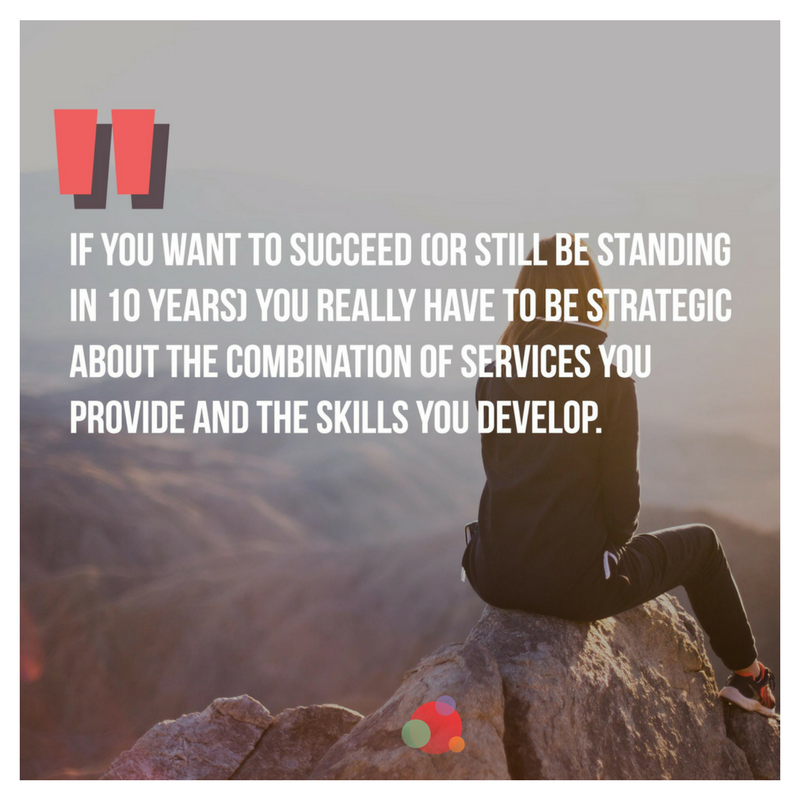 In 2014, we started out with the idea to work at the intersection of marketing and PR.
In 2014, we started out with the idea to work at the intersection of marketing and PR.
With strong journalistic roots, and all things digital marketing in our crown, we strongly believed there wouldn’t be any borders between areas of expertise.
We got feedback from potential clients who told us they don’t understand how we could work in PR and provide video content at the same time.
What they meant was how could we work across multiple disciplines, particularly as a small agency.
Spin Sucks and The PESO Model
Around that time, I stumbled upon Spin Sucks (the book).
If I had read the book before building an agency, I would have built it around the PESO model.
Reading it afterwards made us rethink our agency processes and structure.
We were sure the PESO model or a similar model would be common in a short couple of years (it was 2014).
Today many companies still have separate marketing and PR departments.
They don’t understand they have to work together.
The reality still remains that marketing and PR departments act like fire and ice.
Collaboration at the minimal imaginable level with plenty of reasons why there is no alternative to act as such.
To overcome that, we added another side to the same coin.
Touchpoint Analytics and PESO Model
We use touchpoint analytics as customer centric view and the PESO model as channel centric view.
In touchpoint analytics, we create massive PESO mind maps.
These show (often for the first time) all touchpoints and their connections regardless of department.
It’s not about which channels the company has, but about where their customers are.
It’s about which touchpoints the customers value most.
Say no to, “Let’s send out a news release!“
Say yes to, “At this buying stage they Google and search for detailed and valuable information.”
With personas backed by market research (in an ideal world and to fight cliché) it’s much easier to switch on a clients’ empathy.
This is necessary to prioritize touchpoints along the customer’s needs and thus reduce complexity for everyone.
If our client sees and feels the possibilities, there is no excuse not to create an exchange between marketing and PR.
It would be a benefit for all stakeholders if PR links a news release to valuable long-form content on a landing page instead of the home page.
Maybe the landing page ranks itself.
Perhaps media outlets with high Google rankings on the topic takes the news release and publishes it and links to the landing page.
Or maybe both.
Online marketing supports with AdWords on relevant search terms and display ads on special interest media with high rankings on the topic.
Now we have a lot of possible touch points within Google Search to help customers find valuable information to support their buying decision.
This strategic approach needs some serious thought about what the agencies or communications departments must have competencies.
What does that mean if one wants to serve well long term?
It’s About an Integrated Approach
There is a sweet spot in what you can deliver and how to integrate.
You need to have strong strategic skills and you have to be able to deliver in the doing at the same time.
Writing a news release? Yeah sure, no problem.
Analyzing social media stats or explaining the pros and cons of Typo3 versus WordPress?
No problem at all.
No one knows everything, but if you want to succeed (or still be standing in 10 years) you really have to be strategic about the combination of services you provide and the skills you develop.
Everyone has to walk what he talks. That’s essential.
And the combination relates to who, what, and where your clients are.
This is not an Army—it’s more like a Special Operations Team.
That’s why we call our work Force Multiplied Marketing.
It combines far better results than single parts ever could provide.
Those parts can be marketing, they can be PR, digital, or live communications.
There are no barriers.
For us, that means there will be no digital in our agency description.
We have to think phygital.
Bringing live communications and the digital realm together is what matters most in this day and age.
Real human live interaction—with all senses involved—and using all of the benefits digital communications brings with it.
This is my call-to-action to all Renaissance men and women.
Have fun by generating massive knowledge and wisdom.
Think about doing that across areas of expertise.
How can you connect the dots, create long-term exchange, collaboration, and success?
Watch the Spin Sucks PESO 2.0 Masterclass for FREE and learn how to implement the PESO model to achieve unparalleled communications results.